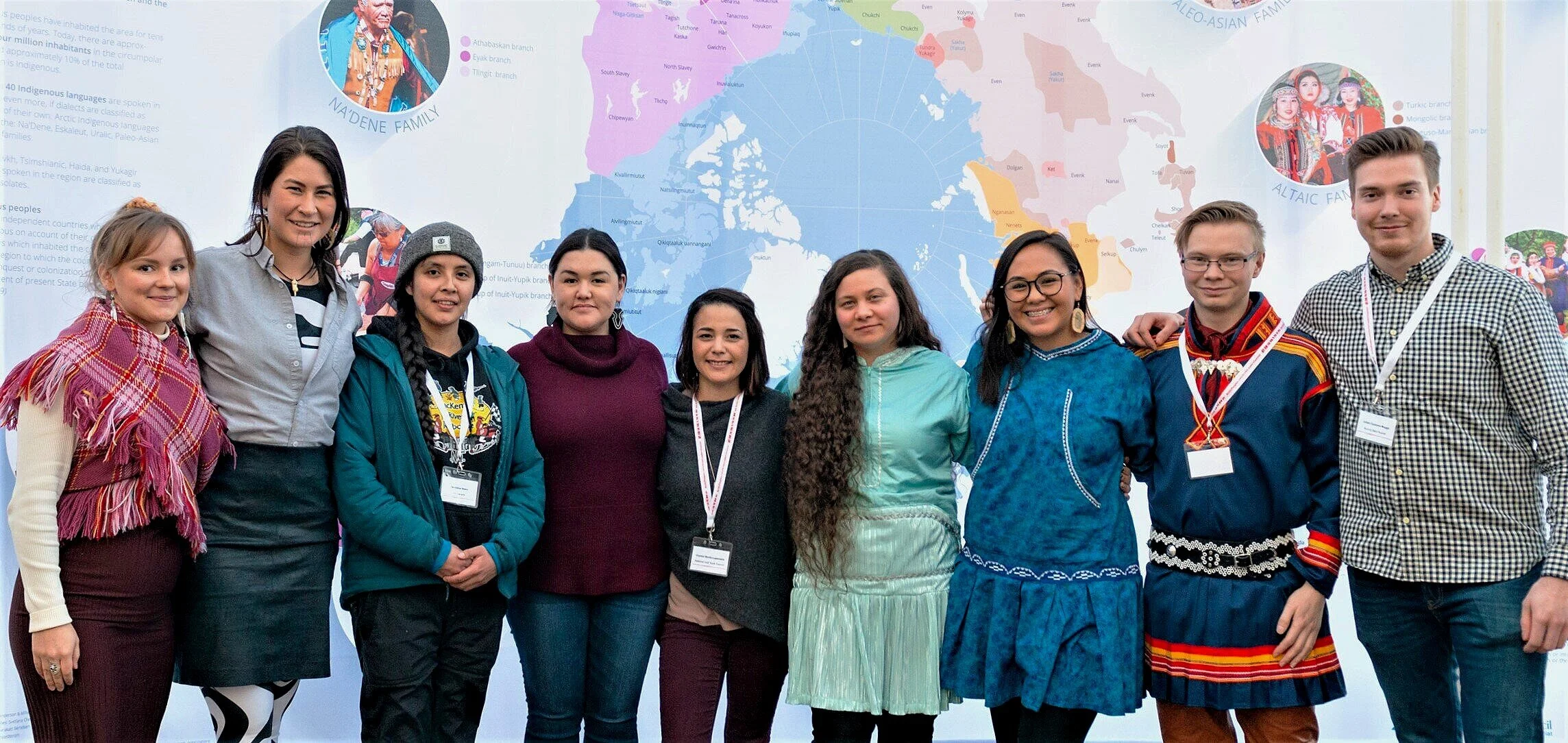About the map
The Arctic Indigenous languages map broadly demonstrates Arctic Indigenous languages spoken by members of the Arctic Council Permanent Participant organizations (Indigenous Peoples Secretariat, 2019). The borders between the language families and locations are illustrative and not entirely precise. Most languages are written in English and not in their traditional orthographies. Different dialects are marked in italics to demonstrate diversity within languages.
Continued work
“Arctic Indigenous languages and revitalization: an online educational resource” is a follow-up project to the language exhibition, beginning in 2021. The purpose of the project is to finalize a peer-reviewed comprehensive circumpolar GIS map of Arctic Indigenous languages to be used as an openly available online resource for education and research. The map project incorporates feedback already received by the Indigenous Peoples’ Secretariat on the first draft of language map that was on display as part of the Ságastallamin exhibition. Everyone is welcome to submit feedback on the map using the form below.
Resources: Arctic Biodiversity Assessment (CAFF, 2013); GRID-Arendal (GRID-Arendal/UN Environment, 2019), W.K. Dallmann (Norwegian Polar Institute, 2012), experts from the Arctic Council Permanent Participant organizations. The language classification for Haida is based on Schoonmaker et al., 1997, for Yukagir on advice from the Institute for the Peoples of the North, 2019.
Submit feedback
The Indigenous Peoples’ Secretariat actively seeks input to further improve the Arctic Indigenous languages map through the project “Arctic Indigenous languages and revitalization: an online educational resource”, a project running from 2021-2022.
Please submit your suggestions to the language map below. We are also looking for suggestions for innovative language revitalization initiatives to feature on the map.


